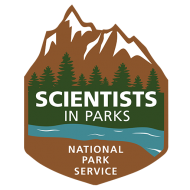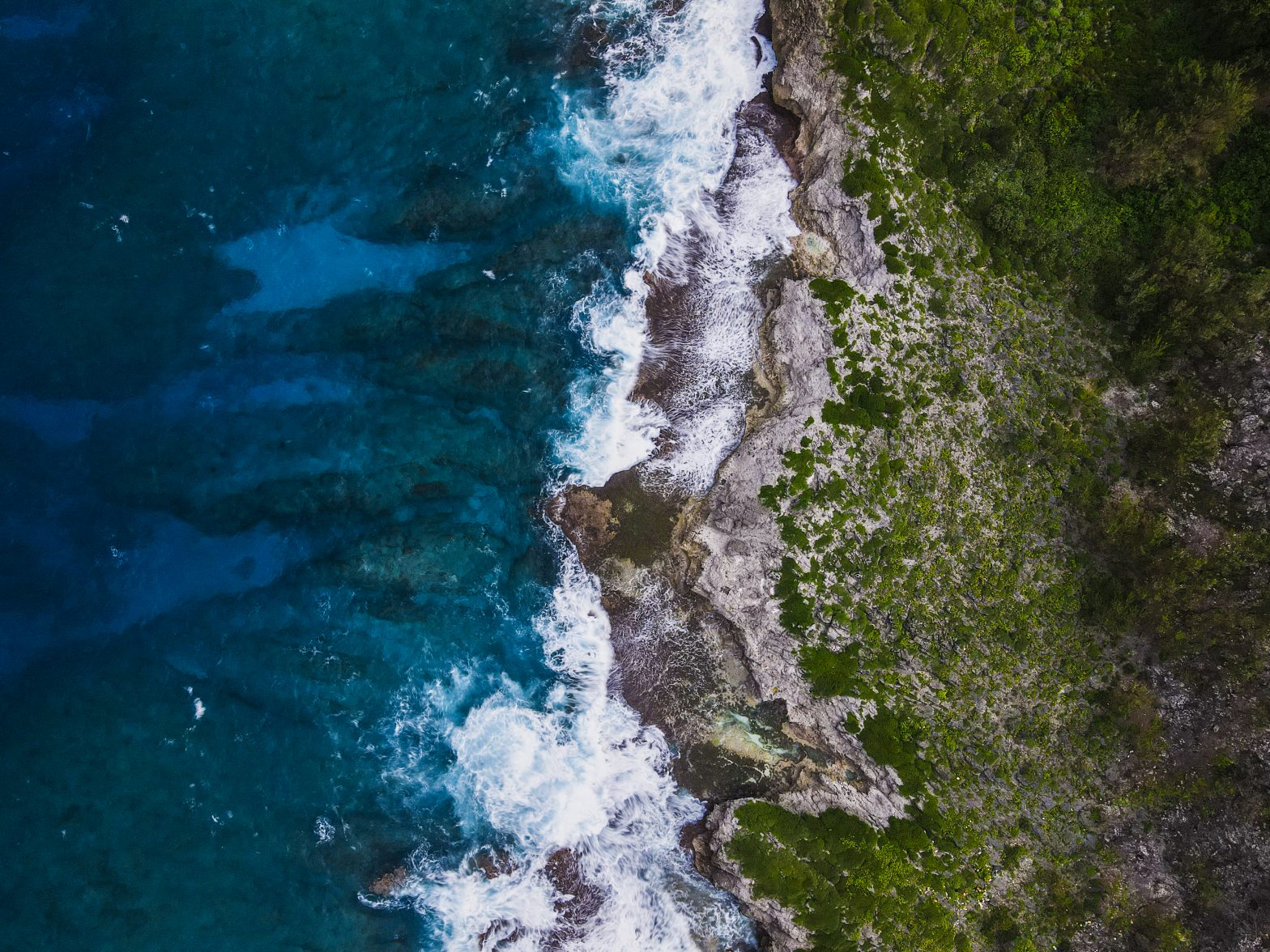Andrea Salazar
Golden Gate National Recreation Area and Muir Woods National Monument
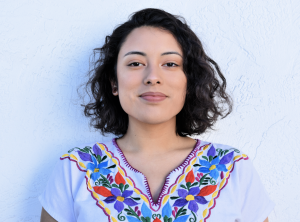 Hello, I’m a junior transfer at UC Berkeley (Huichin land) majoring in Ecosystem Management and Forestry and minoring in Ethnic Studies. I’m interested in combining diverse areas of study to develop an interdisciplinary approach to solving environmental problems. I believe it is critical to incorporate historical and cultural awareness as a scientist to better serve communities. My background as a non-traditional, first-generation, low-income student has evoked my interest in various areas of research. I have worked on projects dealing with phage and pathogen interactions, historical and contemporary analysis of home loss in Black communities, mentorship of disadvantaged student populations, Indigenous stewardship, and Indigenous food sovereignty.
Hello, I’m a junior transfer at UC Berkeley (Huichin land) majoring in Ecosystem Management and Forestry and minoring in Ethnic Studies. I’m interested in combining diverse areas of study to develop an interdisciplinary approach to solving environmental problems. I believe it is critical to incorporate historical and cultural awareness as a scientist to better serve communities. My background as a non-traditional, first-generation, low-income student has evoked my interest in various areas of research. I have worked on projects dealing with phage and pathogen interactions, historical and contemporary analysis of home loss in Black communities, mentorship of disadvantaged student populations, Indigenous stewardship, and Indigenous food sovereignty.
This summer I will be in the Golden Gate National Recreation Area and Muir Woods area monitoring and managing endangered species within these parklands. Species of concern for this project are the northern spotted owl and the marbled murrelet. I am excited to contribute to wildlife conservation through a variety of frameworks including GIS, data science, and traditional fieldwork. I hope to develop a deeper understanding of wildlife ecology and its integration within a broader ecological context to achieve my future environmental endeavors.
Andrew Burchill
Isle Royale National Park
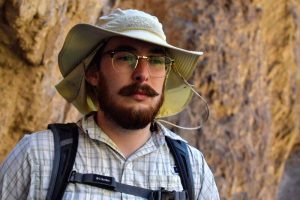 As a biologist, data scientist, and public land enthusiast, I am very excited to work with Isle Royale National Park this summer. In fact, becoming a government scientist is my main career goal! I see this as a wonderful way to continue my love of field work, data analysis, and public outreach.
As a biologist, data scientist, and public land enthusiast, I am very excited to work with Isle Royale National Park this summer. In fact, becoming a government scientist is my main career goal! I see this as a wonderful way to continue my love of field work, data analysis, and public outreach.
I am currently finishing up my PhD work on collective animal behavior and complex adaptive systems at Arizona State University. My thesis focuses on how teams of ants, without leaders or language, manage to cooperate to solve very complicated challenges. Although I will never rescind my view that social insects dominate the terrestrial biome, I am ready and eager to start studying animals that I don’t need a microscope to look at… in this case, birds! I can’t wait to start digging through the decades of bird breeding data that has been collected at Isle Royale.
Alexandra Gulick
Buck Island Reef National Monument, Salt River Bay National Historical Park and Ecological Preserve, and Christiansted National Historical Park
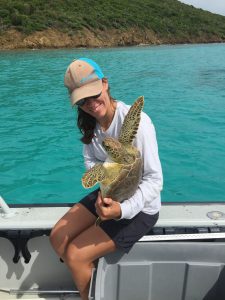 What happens when endangered species recover into ecosystems that have been degraded by human activity? How should resource managers and scientists prepare the public for the impacts of species recovery on ecosystem services? These two questions are the core of my interests as an aspiring marine ecologist and resource manager. My doctoral research focuses on the grazing dynamics and foraging behavior of recovering green turtle populations in Caribbean seagrass ecosystems. As a Scientists in Parks Fellow, I will provide a baseline assessment for the hawksbill sea turtle nesting population at Buck Island Reef National Monument, a marine protected area managed by NPS at CHRI. This status assessment will assist resource managers in adapting management plans to ensure the continued recovery trend of this endangered species in the park. My passion for biology and appreciation for natural resources stem from spending my childhood on a cattle ranch in rural Eastern Oregon. I received a B.Sc. in Biology (Marine Biology Emphasis) from Oregon State University. I am currently a PhD Candidate in the Department of Biology and Archie Carr Center for Sea Turtle Research at the University of Florida.
What happens when endangered species recover into ecosystems that have been degraded by human activity? How should resource managers and scientists prepare the public for the impacts of species recovery on ecosystem services? These two questions are the core of my interests as an aspiring marine ecologist and resource manager. My doctoral research focuses on the grazing dynamics and foraging behavior of recovering green turtle populations in Caribbean seagrass ecosystems. As a Scientists in Parks Fellow, I will provide a baseline assessment for the hawksbill sea turtle nesting population at Buck Island Reef National Monument, a marine protected area managed by NPS at CHRI. This status assessment will assist resource managers in adapting management plans to ensure the continued recovery trend of this endangered species in the park. My passion for biology and appreciation for natural resources stem from spending my childhood on a cattle ranch in rural Eastern Oregon. I received a B.Sc. in Biology (Marine Biology Emphasis) from Oregon State University. I am currently a PhD Candidate in the Department of Biology and Archie Carr Center for Sea Turtle Research at the University of Florida.
Joelee Tooley
Lassen Volcanic National Park
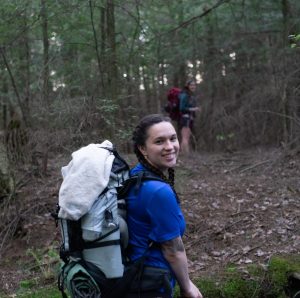 Hello everyone! I am currently enrolled at SUNY College of Environmental Science and Forestry (ESF) where I am obtaining my M.P.S. in Fish and Wildlife Biology and Management. I also received my Bachelors degree from SUNY ESF in Wildlife Science. My studies have been focused on mammals and their management, as well as applied wildlife science methods such as occupancy modeling, adaptive management, GIS, landscape ecology etc. I am a non-thesis track masters student, which means I am more focused on the management/applied side of the wildlife world! I spend most of my free time hiking and backpacking in the forests of New York, gardening, doing yoga, and hammocking around. I am very excited to explore the West coast as I’ve been an East coast girl all of my life! I am looking forward to working with Pika in Lassen Volcanic National Park and learning about their sensitivity to climatic change and zoonotic diseases.
Hello everyone! I am currently enrolled at SUNY College of Environmental Science and Forestry (ESF) where I am obtaining my M.P.S. in Fish and Wildlife Biology and Management. I also received my Bachelors degree from SUNY ESF in Wildlife Science. My studies have been focused on mammals and their management, as well as applied wildlife science methods such as occupancy modeling, adaptive management, GIS, landscape ecology etc. I am a non-thesis track masters student, which means I am more focused on the management/applied side of the wildlife world! I spend most of my free time hiking and backpacking in the forests of New York, gardening, doing yoga, and hammocking around. I am very excited to explore the West coast as I’ve been an East coast girl all of my life! I am looking forward to working with Pika in Lassen Volcanic National Park and learning about their sensitivity to climatic change and zoonotic diseases.
Sana Saiyed
Hawai’i Volcanoes National Park
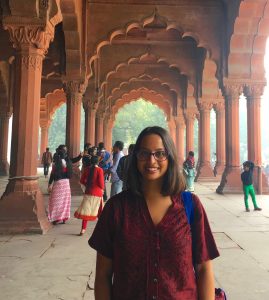 I’m a PhD candidate in the Department of Anthropology at the University of Notre Dame. I study human-monkey entanglements in India by exploring how human cultural dynamics impact monkey socioecology (and vice-versa). I am particularly interested in how to use this information to create effective conservation and wildlife management strategies alongside local community members. In summer 2021, I will be helping to build a locally-informed high school climate science curriculum at Hawai’i Volcanoes National Park. As a former high school science teacher, I’m excited to blend my experiences and interests to get youth involved in local climate science, environmental justice, and fostering strong relationships with their local ecologies.
I’m a PhD candidate in the Department of Anthropology at the University of Notre Dame. I study human-monkey entanglements in India by exploring how human cultural dynamics impact monkey socioecology (and vice-versa). I am particularly interested in how to use this information to create effective conservation and wildlife management strategies alongside local community members. In summer 2021, I will be helping to build a locally-informed high school climate science curriculum at Hawai’i Volcanoes National Park. As a former high school science teacher, I’m excited to blend my experiences and interests to get youth involved in local climate science, environmental justice, and fostering strong relationships with their local ecologies.
Sienna Wessel
Grand Teton National Park
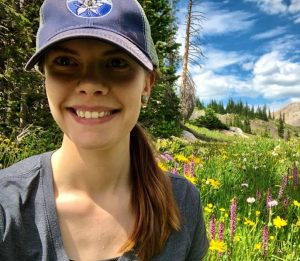 My first field experiences took place in the some of the last remaining patches of native tallgrass prairie in the northern Great Plains. After witnessing the expansive conversion and degradation of these ecologically important communities, a desire was sparked within me to dedicate my life to the conservation and restoration of plant biodiversity. Today, I am pursuing a master’s degree in Botany at the University of Wyoming. My research is focused on understanding the responses of imperiled sagebrush steppe communities to restoration efforts and incorporating ecological theory to improve restoration outcomes in the face of climate change. I am excited to expand this work as a SIP intern with Grand Teton National Park this summer where I will help to translate ecological research into management actions, update monitoring plans, and communicate with the public about the importance of the sagebrush steppe.
My first field experiences took place in the some of the last remaining patches of native tallgrass prairie in the northern Great Plains. After witnessing the expansive conversion and degradation of these ecologically important communities, a desire was sparked within me to dedicate my life to the conservation and restoration of plant biodiversity. Today, I am pursuing a master’s degree in Botany at the University of Wyoming. My research is focused on understanding the responses of imperiled sagebrush steppe communities to restoration efforts and incorporating ecological theory to improve restoration outcomes in the face of climate change. I am excited to expand this work as a SIP intern with Grand Teton National Park this summer where I will help to translate ecological research into management actions, update monitoring plans, and communicate with the public about the importance of the sagebrush steppe.
Vida Svahnstrom
Chesapeake and Ohio Canal National Historic Park
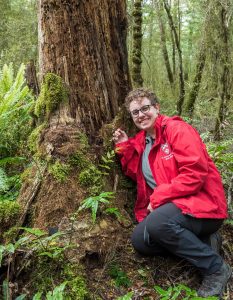 My name is Vida Svahnstrom and I am a graduating senior at the University of St Andrews in Scotland, where I majored in Evolutionary Biology and completed a dissertation on automated extinction risk assessments for plants. I have lived in both Florida and Sweden and my travels have instilled in me a deep appreciation of and love for the natural world. I am especially passionate about plants and conservation of threatened species and I will be starting a Masters degree in Plant and Fungal Taxonomy, Diversity, and Conservation at the Royal Botanic Gardens, Kew in London next fall to further pursue this passion. I am also interested in hiking, plant and wildlife photography, and horticulture, and enjoy integrating these interests in my research.
My name is Vida Svahnstrom and I am a graduating senior at the University of St Andrews in Scotland, where I majored in Evolutionary Biology and completed a dissertation on automated extinction risk assessments for plants. I have lived in both Florida and Sweden and my travels have instilled in me a deep appreciation of and love for the natural world. I am especially passionate about plants and conservation of threatened species and I will be starting a Masters degree in Plant and Fungal Taxonomy, Diversity, and Conservation at the Royal Botanic Gardens, Kew in London next fall to further pursue this passion. I am also interested in hiking, plant and wildlife photography, and horticulture, and enjoy integrating these interests in my research.
This summer, I will be working and living at Chesapeake & Ohio Canal National Historical Park in Maryland, where I will be working on developing species-specific management strategies for endangered plants. I’m excited by the opportunity to apply my knowledge and interests in conservation and botany to this important project, and to learn more about the National Parks Service and the biodiversity of Maryland.
Kelsey Hollien
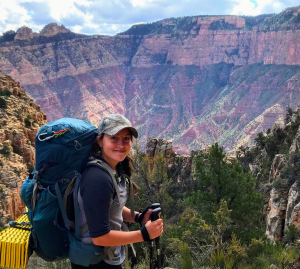 Hello! I am a graduate student at the University of Arizona in the School of Natural Resources and the Environment. I am an aquatic ecologist with a focus in macroinvertebrate community ecology. I have worked with everything from food web dynamics in desert springs to aquatic invertebrate communities in effluent-dominated urban streams. My thesis work now focuses on the impact of intermittency on macroinvertebrate communities and biodiversity in arid-land stream systems. I love aquatic insects of all kinds and have a deep appreciation for our unique desert aquatic habitats. I am an SIP Fellow working at Saguaro National Park monitoring wildlife use of high elevation springs and how it changes seasonally, across habitat types, and is influenced by other landscape and environmental factors like hydroperiod and climate change. I have worked for several natural resource agencies and environmental consulting firms, but public lands and the agencies that maintain them hold a special place in my heart. I am looking forward to working with the park service to explore these influential water sources in such a unique landscape.
Hello! I am a graduate student at the University of Arizona in the School of Natural Resources and the Environment. I am an aquatic ecologist with a focus in macroinvertebrate community ecology. I have worked with everything from food web dynamics in desert springs to aquatic invertebrate communities in effluent-dominated urban streams. My thesis work now focuses on the impact of intermittency on macroinvertebrate communities and biodiversity in arid-land stream systems. I love aquatic insects of all kinds and have a deep appreciation for our unique desert aquatic habitats. I am an SIP Fellow working at Saguaro National Park monitoring wildlife use of high elevation springs and how it changes seasonally, across habitat types, and is influenced by other landscape and environmental factors like hydroperiod and climate change. I have worked for several natural resource agencies and environmental consulting firms, but public lands and the agencies that maintain them hold a special place in my heart. I am looking forward to working with the park service to explore these influential water sources in such a unique landscape.
Mary Buford Turnage
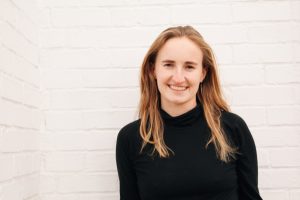
I received my bachelor’s degree from Bates College in 2019 in biology, where I focused mostly on biomedical science and human health. Towards the end of that time and after graduation I worked with wildlife conservation abroad in Tanzania, with manatees in Florida, and remotely with orangutans during quarantine. I am currently a graduate student studying Conservation Medicine at Tufts University, which focuses on the intersection of human, animal, and environmental health. During this degree I’ve grown more interested in the human systems and industries that threaten wildlife and ecosystems, rather than the wildlife species themselves, especially relating to agriculture, plastics, and deforestation. This summer I will be working at Dinosaur National Monument on several GIS mapping and field biology projects relating to invasive and endangered plant species and bighorn sheep monitoring. I am looking forward to extending my academic comfort zone to new research skills and ecosystems, and to learning about the National Parks Service. In my free time I enjoy mountain biking, rock climbing, and skiing, and am excited to get outside as much as I can this summer.
Hannah Bonner
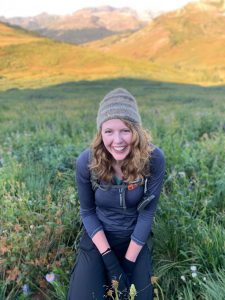
I love pursuing novel research to address real-world problems. I’ve had the opportunity to be involved in a widespread of geoscience-related projects, including studying landslide structure in China, designing the scientific components of a Mars rover, writing a book about paleogeography, and developing new scientific communication tools. Most recently, my work revolves around improving knowledge and management of critical water resources. As a PhD student at the University of Colorado Boulder, I study the amount of water available in the seasonal snowpacks. Using a combined modeling and empirical approach, my research aims to expand our understanding of forest-snow processes and enable more accurate predictions of snow water equivalent. As a Scientist in Parks Fellow at Zion National Park, I’ve shifted my focus to studying how the path water takes – from snowmelt or runoff to integration in a major river – affects water quality. Specifically, I’m looking at benthic cyanobacteria toxins in tributaries of the Virgin River. I’m excited to be working with the park to develop new monitoring techniques, collect data on previously unobserved species, and find solutions to park management questions.
